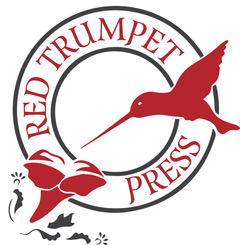A good friend of mine, a lifelong bachelor, once told me he knew how to cook just one dish really well: grilled salmon with a rich, homemade red pepper sauce. The dish never failed to impress his guests, and with good reason: it was scrumptious.
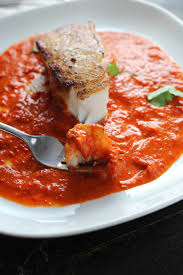
image courtesy girlandthekitchen.com
If you’ve ever tried to create a sauce from scratch, you know it requires three basic steps:
- Select the most delicious ingredients
- Mix them up and apply heat
- Simmer until you’ve reduced the mixture to about half of what you started with.
Following those steps (without over-boiling or adding extra thickeners) should yield a complex, flavorful concoction destined to win over even the most cynical gourmand.
It occurred to me that writing good historical fiction requires the same process.
I’ve been writing fiction for about five years (and thinking about writing fiction for much longer than that). Because I love history (and earned two degrees in it), I knew that was the genre that would really float my boat…and it has. The era I currently write about encompasses the Gilded age—the period in American history between the Civil War and the turn of the twentieth century. My series, “The Golden City,” takes place primarily in San Francisco, which must have been an astounding place to live in during that time.
So many ingredients to choose from
For each book in “The Golden City” series, there was an abundance of fascinating topics to write about:
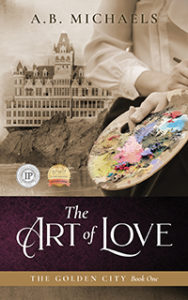 The Art of Love: The Klondike Gold Rush, gold extraction and the rough and tumble life led by Yukon miners and their families; San Francisco’s booming economy and burgeoning bohemian art movement; the rise of commercial steamship travel to Asia; introduction of the automobile; oppressive divorce laws; social taboos.
The Art of Love: The Klondike Gold Rush, gold extraction and the rough and tumble life led by Yukon miners and their families; San Francisco’s booming economy and burgeoning bohemian art movement; the rise of commercial steamship travel to Asia; introduction of the automobile; oppressive divorce laws; social taboos.
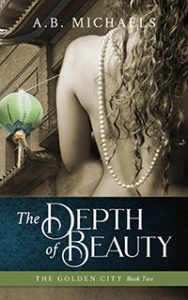 The Depth of Beauty: Chinese immigrants, changing customs and discrimination; missionary work in the city and elsewhere; cross country train travel; opioid addiction; the Bubonic Plague; “tableaux vivant” performances; gambling; prostitution; nude modeling; more social taboos.
The Depth of Beauty: Chinese immigrants, changing customs and discrimination; missionary work in the city and elsewhere; cross country train travel; opioid addiction; the Bubonic Plague; “tableaux vivant” performances; gambling; prostitution; nude modeling; more social taboos.
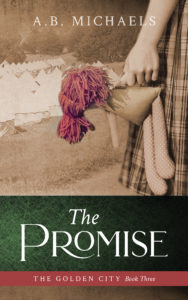 The Promise: Military practices during and after the Great Earthquake of 1906; travel in turn of the century California; survival after a natural disaster.
The Promise: Military practices during and after the Great Earthquake of 1906; travel in turn of the century California; survival after a natural disaster.
 The Price of Compassion: Rural life in the late 19th century Midwest; natural healing; the emergence of college football; advances in medical training and surgical techniques; the nationwide fad of “neurasthenia”; scientific discoveries such as X-rays and germ theory; railway surgeons; America’s first health resorts; controversies surrounding the aftermath of the 1906 earthquake and fire; refugee camps; outrageous cures for psychological problems…so many ideas—so few pages!
The Price of Compassion: Rural life in the late 19th century Midwest; natural healing; the emergence of college football; advances in medical training and surgical techniques; the nationwide fad of “neurasthenia”; scientific discoveries such as X-rays and germ theory; railway surgeons; America’s first health resorts; controversies surrounding the aftermath of the 1906 earthquake and fire; refugee camps; outrageous cures for psychological problems…so many ideas—so few pages!
Mix them up and turn on the heat
All of those topics would be just facts if they weren’t woven into a gripping story, and that’s where the alchemy begins. Who cares if thousands were rendered homeless by one of the biggest temblors ever experienced – it’s just a number, right? But to nearly die from a tumbling roof, feel the panic of an encroaching fire, or barely escape death by a deranged looter—that kind of story-telling brings cataclysmic events to life in ways history textbooks just can’t do.
Reduce, reduce, reduce
One of the common complaints about historical fiction writers is that they inject too many of the facts they’ve learned into the story, dragging it down with “telling.” It’s tempting, believe me; in researching my novels, I come across so many fascinating tidbits that, if I were to put them all in, you’d be using the paperback version as a doorstop in nothing flat. The first draft of The Price of Compassion, in fact, was so long that after reading it, a dear friend and fellow writer told me in no uncertain terms, “Nope – you’ve got two books here, not one. Get the ax and start cutting.”
Heeding her advice, I divided the story and kept tightening the prose, asking myself at every turn if a description I’d included truly developed my characters or advanced the plot. If it didn’t, out it went. Sometimes it can be downright painful to take the red pen to one’s work, but it’s necessary in order to move the story along while retaining just enough detail to keep the reader immersed in the time and place you’ve introduced them to.
I hope you’ll try a selection from “The Golden City.” From The Art of Love to The Price of Compassion, each novel stands on its own, but together, they form a sweeping and powerful saga. I know you’ll find them to be complex, rich, and full of flavor – a truly satisfying reading experience. And the best part is, you won’t gain a pound devouring them.

P.S. Remember those historical tidbits I came across but couldn’t fit into the story? Some of them will turn up on this very blog site as “Juicy Bites from the Curious Peach.” And the story I left behind? It turned into its own full-length novel, Josephine’s Daughter, to be released early next year.

